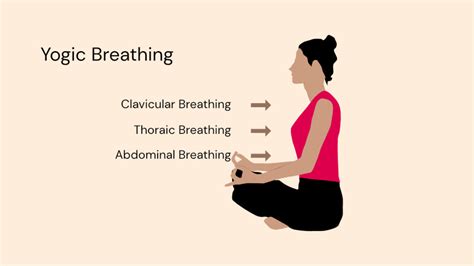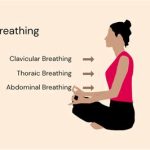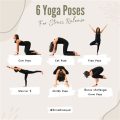Mastering Essential Yoga Breath Patterns: Techniques, Benefits, and Best Practices
Yoga breathwork, known as Pranayama, plays a fundamental role in deepening yoga practice, enhancing physical and mental well-being, and creating a connection between the body and mind. Whether you are a beginner or an advanced practitioner, mastering essential yoga breath patterns can unlock new layers of self-awareness, relaxation, and energy. This guide will delve into key concepts, historical background, practical applications, and expert insights on yoga breathing techniques.
Introduction
Breathing in yoga, far more than a basic bodily function, is an art form that enables practitioners to control their energy, mood, and physical state. The breath acts as a bridge between the body and mind, creating a state of balance when done correctly. This article explores essential yoga breath patterns that can deepen one’s practice and the science behind their transformative power. Additionally, we’ll discuss the potential applications of these techniques, their historical context, and the latest research, highlighting their relevance in today’s world.
Key Concepts
- Pranayama: The yogic practice of breath control. It encompasses a range of techniques designed to promote vitality, relaxation, and mindfulness.
- Ujjayi Breath: Also called the “ocean breath” due to its sound, it is a diaphragmatic breathing technique that calms the mind and promotes focus during yoga practice.
- Nadi Shodhana: Often referred to as “alternate nostril breathing,” it balances the flow of energy through the body and harmonizes the nervous system.
- Kapalabhati: A rapid, forceful breathing technique that stimulates the abdominal muscles and energizes the mind.
- Bhramari: The “bee breath,” which involves producing a humming sound to induce relaxation and inner calm.
- Breath Retention (Kumbhaka): A controlled pause between inhales and exhales, used to increase lung capacity and stabilize the mind.
Historical Context
Breath control has been integral to yoga practice for millennia. Rooted in ancient India, pranayama is one of the eight limbs of Patanjali’s Yoga Sutras, which outlines a holistic approach to spiritual growth. Early texts, such as the Hatha Yoga Pradipika (15th century CE), expounded on the importance of pranayama in purifying the body’s energy channels (nadis) and raising the practitioner’s vitality. Over time, different schools of yoga have evolved to emphasize various breath techniques, demonstrating the adaptability and relevance of pranayama across generations.
Current State Analysis
In recent years, scientific research has validated many of the benefits traditionally attributed to yoga breath patterns. Studies have shown that pranayama can improve cardiovascular health, reduce anxiety, and enhance lung function. Popular yoga studios and online platforms increasingly include breathwork in their classes, recognizing its holistic benefits. However, there are also ongoing debates about the best way to introduce these techniques to beginners and how to measure their long-term effectiveness.
| Yoga Breath Pattern | Primary Benefit | Common Application |
|---|---|---|
| Ujjayi Breath | Promotes concentration and calm | Vinyasa Flow, Ashtanga Yoga |
| Nadi Shodhana | Balances the nervous system | Pre-meditation practice |
| Kapalabhati | Energizes and detoxifies the body | Morning routines, Hatha Yoga |
| Bhramari | Relieves stress and tension | End of yoga practice, before sleep |
| Kumbhaka (Breath Retention) | Increases lung capacity | Advanced pranayama sessions |
Practical Applications
Incorporating breath patterns into daily life can provide immediate benefits, from reducing stress to enhancing focus. Below are practical ways to integrate yoga breathing techniques into different aspects of life:
- Workplace Stress Management: A brief practice of Nadi Shodhana or Ujjayi breath can provide clarity and calm in moments of high stress at work.
- Physical Endurance: Athletes often adopt Ujjayi breath to maintain stamina during intense physical exertion, such as long-distance running or weightlifting.
- Daily Meditation: Bhramari is a powerful technique to incorporate before meditation, helping to quiet the mind and prepare for deeper mental focus.
Case Studies
Examining real-world examples can illustrate the tangible benefits of mastering yoga breath patterns:
- Case Study 1: Anxiety Management in Young Adults
A study conducted at a university found that students practicing Nadi Shodhana for 10 minutes daily experienced a 30% reduction in anxiety symptoms after four weeks. - Case Study 2: Improved Athletic Performance
A group of endurance runners incorporated Ujjayi breathing into their training regime and reported improved focus and reduced perceived exertion during competition. - Case Study 3: Enhancing Sleep Quality
Incorporating Bhramari breath before bedtime helped participants with insomnia fall asleep 20 minutes faster, on average, than before introducing the technique.
Stakeholder Analysis
Different stakeholders have a vested interest in the development and promotion of yoga breath patterns:
- Yoga Instructors: As the primary educators, they influence how breathwork is introduced and integrated into yoga practice.
- Healthcare Providers: Physicians and therapists recognize the therapeutic benefits of pranayama for managing stress, anxiety, and chronic respiratory conditions.
- Fitness Trainers: Many trainers now integrate breathwork into their fitness routines to enhance physical performance and recovery.
- Corporate Wellness Programs: Companies promoting employee wellness incorporate yoga breath techniques to reduce workplace stress and improve productivity.
Implementation Guidelines
For beginners and advanced practitioners alike, implementing yoga breath patterns into daily life requires consistent practice and gradual progression. Below are step-by-step guidelines for introducing each technique:
- Start Slow: Begin with simpler techniques like Ujjayi or Nadi Shodhana, gradually increasing the duration and intensity of breathwork.
- Monitor Progress: Keep a journal to track physical and mental changes experienced during the practice of pranayama.
- Seek Guidance: Work with a certified yoga instructor to ensure that techniques are performed safely and effectively, especially for advanced practices like Kumbhaka.
Ethical Considerations
While the benefits of pranayama are well-documented, it is essential to approach the practice with care and respect. Issues such as cultural appropriation, commercialization, and the integrity of traditional teachings must be taken into account. Yoga breathwork is a spiritual practice with deep roots in Indian culture, and practitioners should be mindful of its origins and respectful in their approach.
Limitations and Future Research
Despite its many benefits, there are still gaps in the research on yoga breath patterns, particularly concerning their long-term effects on various populations. Future research should aim to explore:
- The impact of pranayama on specific mental health disorders, such as PTSD or bipolar disorder.
- Longitudinal studies tracking the effects of daily breathwork on overall health and well-being.
- Differences in breath pattern effectiveness based on demographic factors like age, gender, and fitness level.
Expert Commentary
As yoga breathwork continues to gain global recognition, experts in the field emphasize the importance of accessibility and proper instruction. According to renowned yoga instructor Sejal Shah, “Yoga breath patterns should be seen as a lifelong journey. Mastery comes with patience, practice, and a deep understanding of their effects on both the mind and body.” In addition, breathwork specialist Dr. Rajesh Patel notes, “While the immediate effects of pranayama are widely known, we are only beginning to understand the profound long-term benefits of these ancient techniques.” Finally, leading yoga researcher Dr. Amy Wheeler highlights the need for more studies: “We have much to learn about the neurophysiological effects of breathwork, but what is clear








